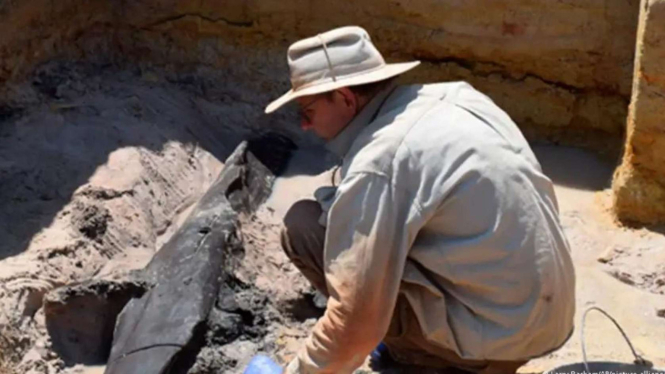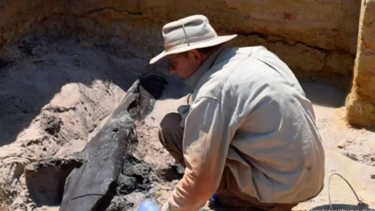Archeologists Discover the World's Oldest Wooden Structure in Zambia
- DW
Zambia – Archaeologists working near Zambia's Kalambo Falls say they have unearthed the world's oldest wooden structure.
Embedded in clay and further preserved by a high water table, scientists revealed that the structure made from the logs of a large-fruited willow tree, was intentionally created roughly 476,000 years ago.
The well-preserved specimen was made before the advent of Homo sapiens, which archaeologists say points to a vastly higher cognitive ability than has been previously ascribed to such ancient ancestors.
The oldest wooden structure known before the announcement of the Zambia find was just 9,000 years old. The oldest known wooden artifact, discovered in Israel, is a 780,000-year-old fragment of plank.
Kayu tertua di dunia
- DW
Find also suggests breaks in nomadic lifestyle
Larry Barham, an archaeologist from the University of Liverpool in the United Kingdom said that the structure, located above a 235-meter-high (770 foot) waterfall on the banks of Zambia's Kalambo River, had been discovered by chance in 2019.
Barham was the lead author of a paper outlining the find in the scientific journal Nature.
"The framework could have supported a walkway or platform raised above the seasonally wet surroundings. A platform could have multiple purposes including storage of firewood, tools, food and as a foundation on which to place a hut," Barham explained.
"Not only did the working of trees require considerable skill, the right tools and planning, the effort involved suggests that the makers were staying in the location for extended periods whereas we have always had a model of Stone Age people as nomadic," he added.
Barham also mentioned: "Use of wood in this way suggests the cognitive ability to these early humans was greater than we have believed based on stone tools alone,"
Scientists also discovered numerous wooden tools from the same time at the site, though they say no skeletal remains have been discovered.
Homo heidelbergensis, smarter than he looked
Scientist Barham suggested the structure, which "involves the intentional shaping of two trees to create a framework of two interlocking supports," was likely created by a species that lived between 700,000 and 200,000 years ago known as Homo heidelbergensis.
The species had a larger brow, larger braincase and flatter face than earlier human species.
Barham remarked that Homo heidelbergensis fossils have been previously found in the region.
The oldest Homo sapiens fossils known to date were found in Morocco and determined to be roughly 300,000 years old.
Wood last saw sunlight half a million years ago
Though wooden artifacts were first unearthed at the site in the 1950s and 60s, scientists at the time were unable to accurately determine their age.
Archaeologists working on the current specimens used what is called luminescence dating, a new technique that determines age by measuring the last time minerals were exposed to sunlight.
“The discovery changed how I thought about these people. They transformed their surroundings to make life easier, even if it was only by making a platform to sit on by the river to do their daily chores," he said.
"They used their intelligence, imagination and skills to create something they'd never seen before, something that had never previously existed."



























